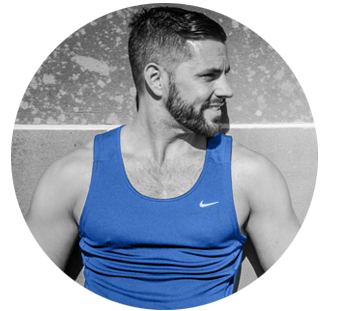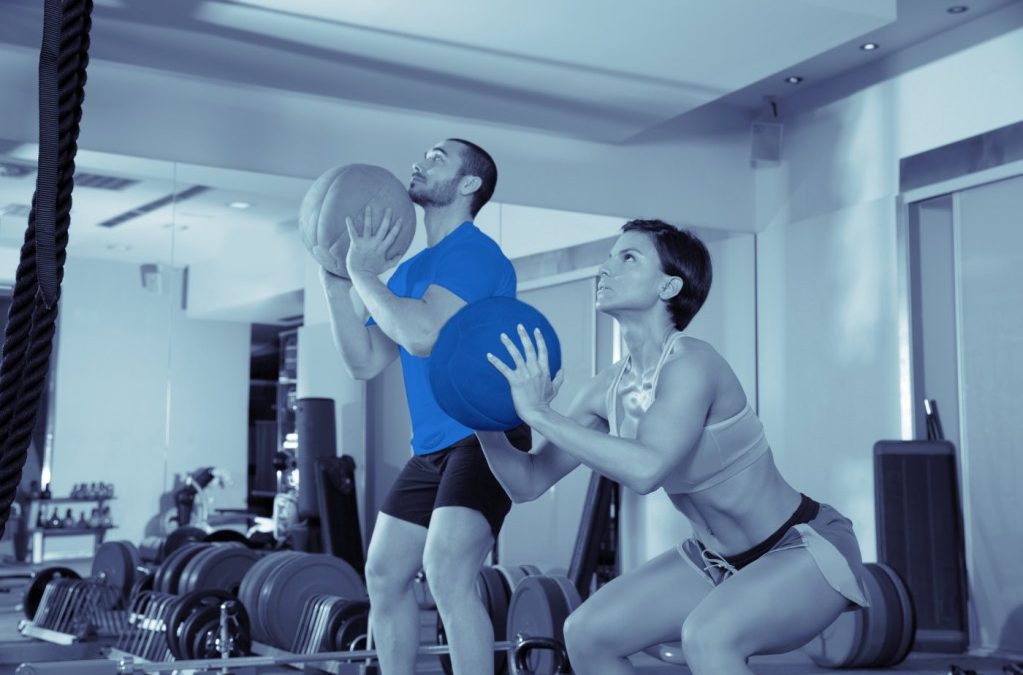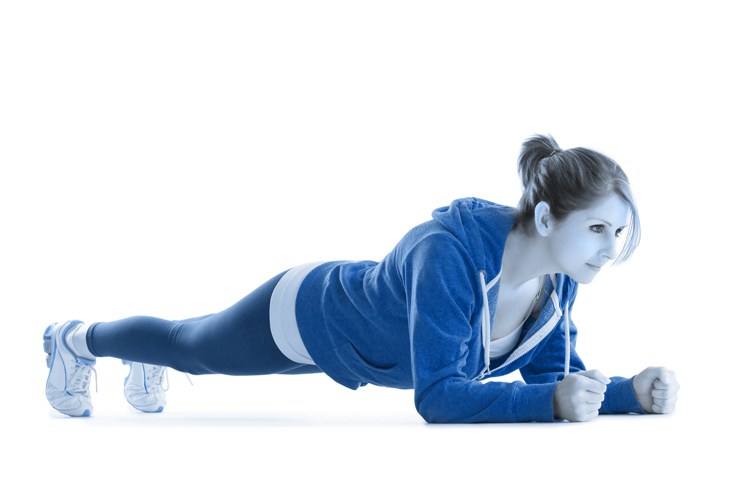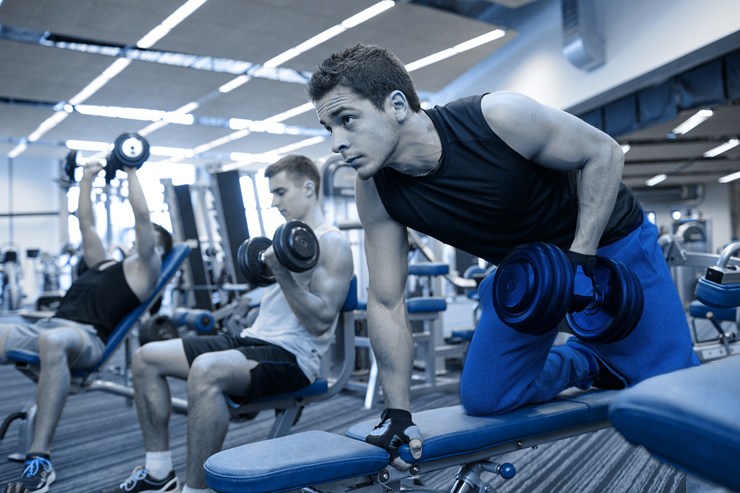For many people, hitting forty is a fitness wake up call – it’s official mid-life crisis time! Middle age spread starts to make its presence known, muscle mass begins to decrease and suddenly, activities that used to be easy begin to feel a bit more demanding. The energy of youth is not quite a distant memory but it’s beginning to fade. That once a month game of football often leaves you feeling battered and bruised for weeks and you know your recovery abilities and natural fitness levels are on the wane. Because of this, it’s time to establish a regular routine of both strength and cardiovascular exercise to try and regain your thirty-something fitness levels.
Train for Performance – Not Appearance
Take a look around most gyms and you’ll see people working on their legs or arms or exercising other specific parts of their bodies. This is not because they want to improve how these body parts function but, rather, how they look. There is nothing wrong with a bit of vanity training for aesthetics purposes but as we age, performance and function become much more important than the way we look. Ironically, functional bodies often look good if not better than bodies trained for aesthetics but that’s a discussion for another article! As you age, your muscles naturally lose strength and size – a phenomenon called sarcopenia. As with all things fitness, it’s a case of use it or lose it so regular strength training workouts will put a halt on muscle loss and improve your strength for daily activities.
Exercises of choice for our discerning older participant include squats, overhead presses, lunges, pull-ups and deadlifts. Now before you get overly concerned about the idea of older people performing hard-core power lifts, remember that some exercises are also functional movement patterns. Whilst the barbell squat is a demanding leg exercise that might not be suitable for some older exercises, the squat movement pattern is vital and is something we all do many times a day. The same is true of the deadlift and overhead press. These movement patterns can be performed using barbells or shopping bags or even just bodyweight. Bottom line for anti-aging strength training? Train movements and not muscles.
Concentrate on Posture
Posture often degrades with age. A lifetime of sitting down, combined with sarcopenia, osteopenia (bone loss) and reduced flexibility can result in a very hyperkyphotic or rounded upper back posture. Hyperkyphosis can increase your risk of suffering a fall, make movements such as raising your arms above your head difficult and also result in insidious non-specific back, shoulder and neck pain. To improve your posture, make sure you exercise the muscles on the back of your body more than the ones on the front. Focus on rowing-type movements, keep your core muscles strong and stretch your chest, shoulders, abs and hip flexors often. Good posture can knock years off your appearance whereas poor posture can make you look and feel old before your time.
Maintain/Increase Bone mass with Weight Bearing Exercise
Bones weaken with age – a process called osteopenia. If left unchecked, this can result in developing full blown osteoporosis – a condition characterised by brittle bones that are prone to fracture. Bone loss can be slowed significantly by performing regular weight bearing exercises such as strength training and walking. Weight bearing exercises make your bone building cells (called osteoblasts) more active and the result is stronger, denser bones. The combination of a healthy, calcium rich diet, plenty of vitamin D and weight bearing exercise will ensure that your bones stay as strong as possible for a long as possible.
Emphasise Mobility and Flexibility
Muscle flexibility and joint mobility often degrade with age. This can affect your balance, your ability to move smoothly and efficiently and also result in joint pain. Muscles tend to tighten up and joints naturally become worn with age – a condition called osteoarthritis – but this doesn’t mean that you should stop exercising. Studies have shown that, contrary to popular belief, strength training and weight bearing exercise results in decreased and not increased joint pain. Whilst exercise places a stress on your joints, that stress is more than offset by the support that your subsequently stronger muscles are able to provide. One study of arthritis sufferers reported a significant reduction in knee pain with people who started squatting regularly. So much for squats being bad for your knees!
Obviously, some exercises may need to be modified to accommodate your respective aches and pains but research proves conclusively that the best way to keep your joints functioning as long is to use them.
As your joints and muscles are beginning to show the signs of wear and tear, your body will benefit from a longer and graduated warm up. Warming up increases synovial fluid production in your joints. Synovial fluid helps to keep your joints well lubricated and also nourishes your hyaline or articular cartilage. Make sure you also find time to stretch your major muscles – not just when you warm up and cool down but regularly throughout the day. Flexibility is another “use it or lose it” fitness attribute so it is vital that you do your utmost to maintain if not improve your flexibility by stretching little and often.
Consider your Medical History
There are numerous age-related medical conditions that can make exercise a daunting prospect – especially as many GPs lack the time or knowledge to be able to advise you as to the type of exercise that is best for you. Luckily, there are plenty of highly qualified personal trainers around who have studied exercise for aging populations who will be only too happy to advise you as to what you should and shouldn’t be doing. It is very rare that a medical condition will preclude you from exercise but some medical conditions may mean that certain exercises need to be adapted to meet your specific needs. Seek out personal trainers with exercise for special populations’ qualifications and you’ll be sure to get the best and most up to date advice that takes into account any medical conditions you might have and the medication you are taking to control the symptoms.
Don’t Forget your Diet
What you eat and what you don’t eat can have a dramatic effect on how you look and feel. Sugar and processed foods won’t only cause weight gain, they can also cause systemic and local inflammation leading to otherwise avoidable pain and discomfort. Likewise, being overweight places an extra strain on your already aged joints. Once you hit your 40s, you now longer have the youthful protection you once had that allowed you to eat whatever you wanted without any worries about weight gain. Start eating “like an adult” and take responsibility for your health and well-being by basing your diet on healthy wholefoods and stop eating processed crap.
So, are you going to age gracefully or do you want to give Old Father Time a kick in the pants and thumb your nose at age related weakness and poor health? For me there is only one answer and that’s “Come on Father Time – have a go if you think you are hard enough!”
Share this:
Click to share on Twitter (Opens in new window)
Click to share on Facebook (Opens in new window)
Click to share on Google+ (Opens in new window)

AUTHOR
Hi, my name is Dinny Morris. I’m a personal trainer and in sunny Sydney, Australia.
I work with men and women at all levels of their physical development, from overweight couch potatoes who want to get in shape, to professional athletes and natural bodybuilders who want to beef up strength and body mass.

Hi, my name is Dinny Morris. I’m a personal trainer and in sunny Sydney, Australia.
I work with men and women at all levels of their physical development, from overweight couch potatoes who want to get in shape, to professional athletes and natural bodybuilders who want to beef up strength and body mass.




